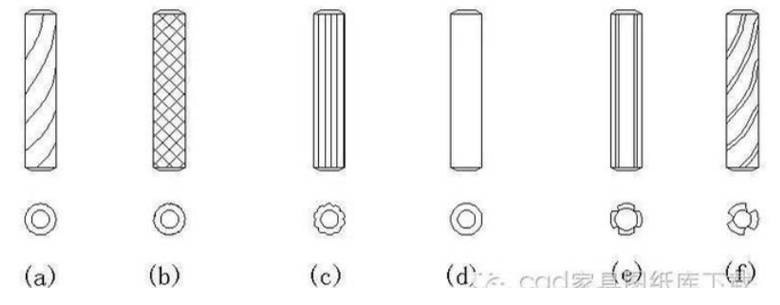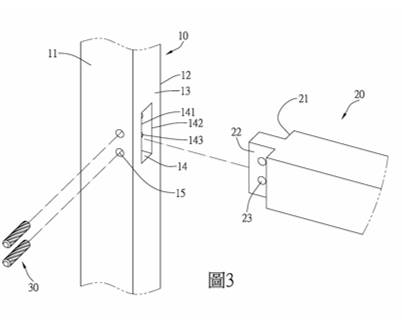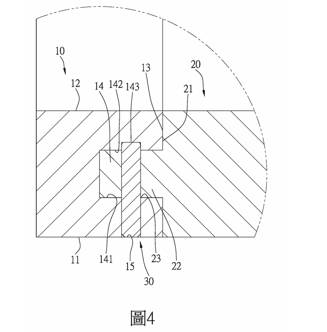Newsletter
Determination of Post-Grant Patent Amendment Exceeding Original Scope – Administrative Judgment No. 16, Xing Zhuan Su Zi, 2024, Intellectual Property and Commercial Court
Article 67, Paragraph 2 of the Patent Act stipulates: "Post-grant amendments, except for corrections of translation errors, shall not exceed the scope disclosed in the description, claims, or drawings at the time of filing."
Furthermore, regarding the determination of whether a post-grant amendment exceeds the scope disclosed in the description or drawings at the time of filing, reference can be made to Chapter 6, Section 2 of Part II of the Patent Examination Guidelines, which states: "For the examination of amendments to the description, claims, or drawings, determination focuses on whether the amended content in the description, claims, or drawings complies with the requirement that 'it shall not exceed the scope disclosed in the description, claims, or drawings at the time of filing.' The scope disclosed in the description, claims, or drawings at the time of filing refers to all matter explicitly recorded (clearly presented) in the description, claims, or drawings at the time of filing (excluding priority documents), or those matters that one of ordinary skill could directly and unambiguously derive from the content disclosed in the description, claims, or drawings at the time of filing. This determination does not restrict the interpretation to a word-for-word explanation of the text in the description, claims, or drawings at the time of filing. The direct and unambiguous derivation for one of ordinary skill refers to matter that such a person, based on the content disclosed, could clearly ascertain (or have no doubt about) as being inherently and specifically implied (solely or collectively) in the amended description, claims, or drawings, without implying other matter. Such inherent specific matter (e.g., individual technical features, multiple technical features, effects, or embodiments) must be directly and unambiguously derivable."
In Administrative Judgment No. 16, Xing Zhuan Su Zi, 2024, dated October 23, 2024, the Intellectual Property and Commercial Court rendered a decision regarding the post-grant amendment in invalidation case No. 106211580N03 exceeding the scope disclosed in the description, claims, or drawings at the time of filing. This decision differed from the determination made by the Intellectual Property Office.
In this case, the patentee had filed for a post-grant amendment to the claims, adding the technical feature "and the outer surface of the tenon is recessed with multiple grooves" to Claim 1. The petitioner argued that this amendment exceeded the scope disclosed in the original patent description and drawings, thereby filing an invalidation.
In the invalidation decision issued by the Intellectual Property Office, it was determined that, based on the illustration "(f) Grooved Spiral Tenon" disclosed on the Sina webpage entitled "Basic Joinery of Wooden Furniture," provided by the petitioner, one of ordinary skill could understand that the tenon 30 depicted in Figure 3 of the disputed patent corresponds to a grooved spiral tenon. Therefore, the added "groove" feature in the post-grant amendment could be directly and unambiguously derived by one of ordinary skill from Figure 3 of the disputed patent. Although the tenon 30 in Figure 4 of the disputed patent does not exhibit the presence of spiral grooves, this is considered a simplification of drawing details, which does not affect the understanding of one of ordinary skill that the tenon 30 in Figure 3 represents a grooved spiral tenon. Consequently, the Intellectual Property Office concluded that the amendment did not exceed the scope disclosed in the description, claims, or drawings at the time of filing.
However, in Administrative Judgment No. 16, Xing Zhuan Su Zi, 2024, the Intellectual Property and Commercial Court held that the post-grant amendment exceeded the scope disclosed at the time of filing, thereby violating Article 120 of the Patent Act, which applies Article 67, Paragraph 2 by reference. The court's reasoning is as follows.
1. Absence of Written Description and Drawing Annotations
The original patent specification and claims of the disputed patent lack any recitation of "grooves" or related terminology. Moreover, the drawings submitted at the time of filing lack any disclosure of "grooves" as a labeled component.
2. Insufficient Support from the Drawings
The disputed patent specification discloses that Figure 3 is an enlarged perspective view of a portion of Figure 2, while Figure 4 is a cross-section of Figure 2. Therefore, Figures 2, 3, and 4 should be considered an inseparable whole. However, as shown in Figure 3, the tenon 30 is depicted with only diagonal patterns. When combined with Figure 4, which is a cross-section rather than schematic, the outer contour of the tenon 30 appears as straight lines with no recessed groove features. Accordingly, one of ordinary skill would not be able to directly and unambiguously ascertain from Figures 3 and 4 that the tenon 30 includes grooves.
3. Inapplicability of External Evidence as a Reference
With respect to the external evidence cited by the patentee in the invalidation defense statement, specifically the illustration "(f) Grooved Spiral Tenon" from the Sina webpage entitled "Basic Joinery of Wooden Furniture," the court held that the drawings of the disputed patent do not show the tenon as having recessed grooves. The structure depicted in the patent drawings is inconsistent with the grooved spiral tenon shown in illustration "(f)" on the cited webpage. As such, the external evidence cannot be applied as a basis for analogy or reference.
4. Questionable Reasonableness of Omitted Details in Drawings
Regarding the assertion that omitting details from drawings constitutes common practice, the court pointed out that Figure 4 is a cross-section intended to clearly depict the internal structure of the object, not a schematic representation. Therefore, there is no need to omit details. Moreover, the patent specification fails to mention that the groove structure was omitted from Figure 4. Combining the diagonal pattern shown in Figure 3 with the straight-line outer contour depicted in Figure 4, one of ordinary skill would be unable to directly determine that the tenon includes grooves. Thus, the assertion is unsubstantiated and cannot be accepted.
From the determinations rendered by the Intellectual Property Office and the Intellectual Property and Commercial Court regarding the post-grant amendment, it is evident that the primary differences lie in interpretation thereby of the drawings of the disputed patent and approaches thereof to the adoption and reasoning based on external evidence.
The Intellectual Property Office held that, based on the external evidence—the illustration "(f) Grooved Spiral Tenon" disclosed on the Sina webpage—one of ordinary skill could understand that the tenon 30 depicted in Figure 3 of the disputed patent corresponds to a grooved spiral tenon. Although Figure 4 of the disputed patent does not explicitly show spiral grooves, the Intellectual Property Office considered this to be merely a simplification of drawing details, which would not impede one of ordinary skill from appreciating the "groove" structure.
|
The illustration from the Sina webpage "Basic Joinery of Wooden Furniture" |
|
|
|
Original Fig. 3 of the Disputed Patent |
Original Fig. 4 of the Disputed Patent |
|
|
|
In this case, the court's review of the post-grant amendment focused on the explicit disclosure in the original application documents, including the description, claims, and drawings. It required that the amended content must be directly and unambiguously derivable by one of ordinary skill. The court also held that external evidence cannot compensate for deficiencies in the disclosure of the original application documents. This judgment demonstrates that the court had adopted a more stringent standard of interpretation and determination regarding post-grant amendments.




